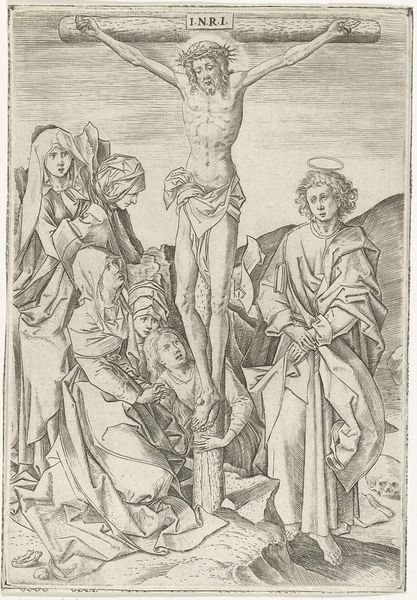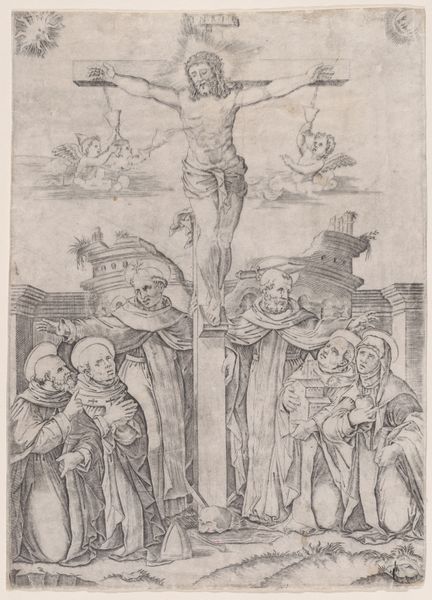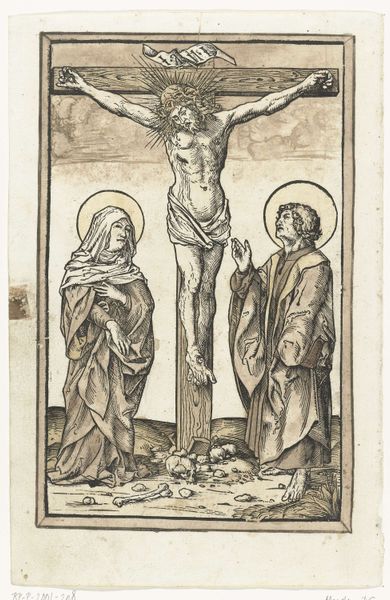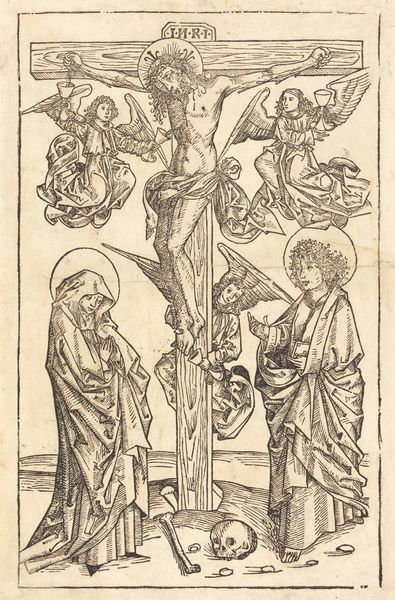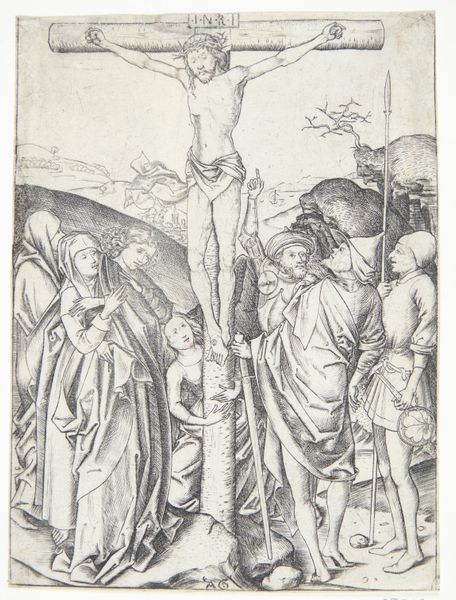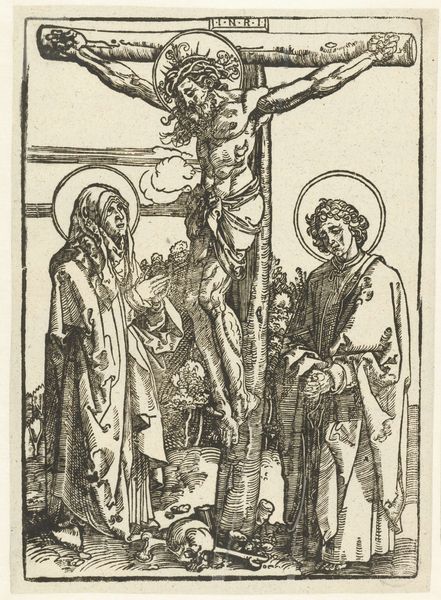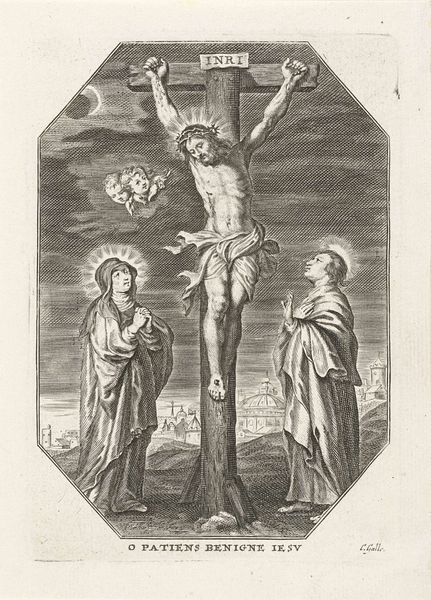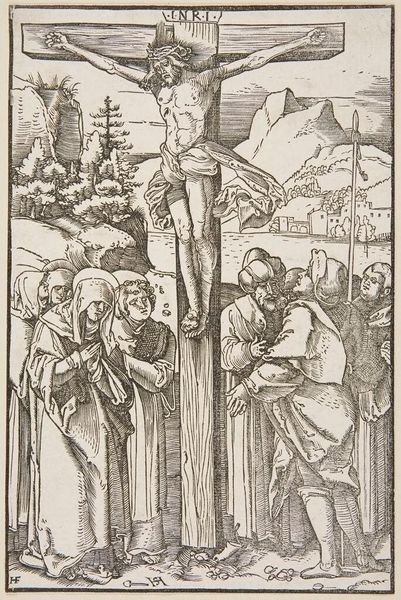
print, engraving
#
medieval
# print
#
figuration
#
history-painting
#
northern-renaissance
#
engraving
Dimensions: height 107 mm, width 72 mm
Copyright: Rijks Museum: Open Domain
Curator: This engraving, dating from about 1470 to 1491, by Martin Schongauer, currently housed in the Rijksmuseum, is entitled "De kruisiging"—"The Crucifixion." What are your initial impressions? Editor: It's stark, yet there’s a gentle melancholy that emanates from it. The cross-hatching emphasizes both the physical suffering and an otherworldly stillness, almost like a visual representation of grief's paralysis. Curator: That emotional resonance would have been very powerful, indeed, for audiences of the time. Schongauer's prints were widely distributed, and they played a crucial role in disseminating religious imagery to a broad public. Prior to this, access to art, and religious art in particular, would largely have been restricted to wealthy patrons and powerful members of the church. Editor: Yes, and considering its size, the engraving possesses a remarkable narrative power. The figures—Christ, Mary, and John the Evangelist—form a symbolic triangle of suffering. Notice how Mary’s veiled head and averted gaze speak to mourning and maternal anguish? The downward flow is further emphasized by the hanging figure of Christ on the cross. It’s such a potent image! Curator: Exactly. The print testifies to the evolving artistic styles in the Northern Renaissance, but the crucifixion theme underscores that images carried enormous political and spiritual weight. Printmaking as a process also lent itself to mass production and the establishment of workshops where new forms of visual language circulated and found new markets. Editor: And it's fascinating how these deeply established iconographic motifs - the crown of thorns, the INRI inscription - create continuity with earlier traditions, yet the emotion feels so immediate. It invites viewers into this scene of loss and sacrifice across generations. Curator: It certainly does. The visual vocabulary Schongauer employs speaks to larger trends in religious imagery where we observe the increased visibility of individual spirituality as print and related media made religion accessible and portable in a new way. Editor: Reflecting on this engraving, it serves as a powerful reminder of art's ability to carry deep emotion. Despite the stark lines and minimalist setting, the image invites contemplation across time. Curator: Indeed. A seemingly simple print can encapsulate and transmit social, religious, and economic transformations.
Comments
No comments
Be the first to comment and join the conversation on the ultimate creative platform.


